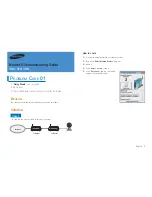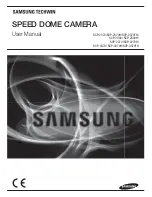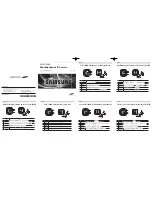
Connecting to External Devices
29
Connecting to External Devices
External device I/O terminals consist of one input system and one output system. Viewer can be used via the
network to check external device input status and control output to an external device (
A
Network Operation
Guide
). Be careful of the polarity when connecting.
IMPORTANT
• Do not push the external device I/O terminal button with too much force. Doing so may cause the button
to remain pushed-in.
External Device Input Terminals (IN)
External device input terminals consist of two terminals (positive and negative), with the negative terminal
connected to the camera interior GND. Connecting a 2-wire cable to the positive and negative terminals and
opening or closing the circuit notifies the Viewer.
IMPORTANT
• When connecting sensors and switches, connect terminals that are electrically isolated from the respective
power and GND.
External Device Output Terminals (OUT)
External device output terminals consist of two terminals (positive and negative). The pair has no polarity.
Controls from the Viewer can be used to open and close the circuit between the terminals. Using optical
couplers, the output terminals are isolated from the camera's internal circuit.
Rating range of the load connected to the output
terminals
Rating between output terminals:
Maximum voltage 50 V DC
Continuous load current at or below 100 mA
On resistance: Max. 30 Ω
NOTES
Adaptive wiring for external device cables
Solid wire/Stranded wire AWG: No. 26 – 20
Cable strip should be approx. 11 mm (0.43 in.).
External device
In
te
rnal
Contr
o
lle
r
Internal Connection Diagram
1 kΩ
10 kΩ
Input terminal
Output terminal
0.1 μF
10 kΩ
External device
+3.3 V
External device
Summary of Contents for ME20F-SHN
Page 39: ...BIE 7222 000 CANON INC 2017...










































